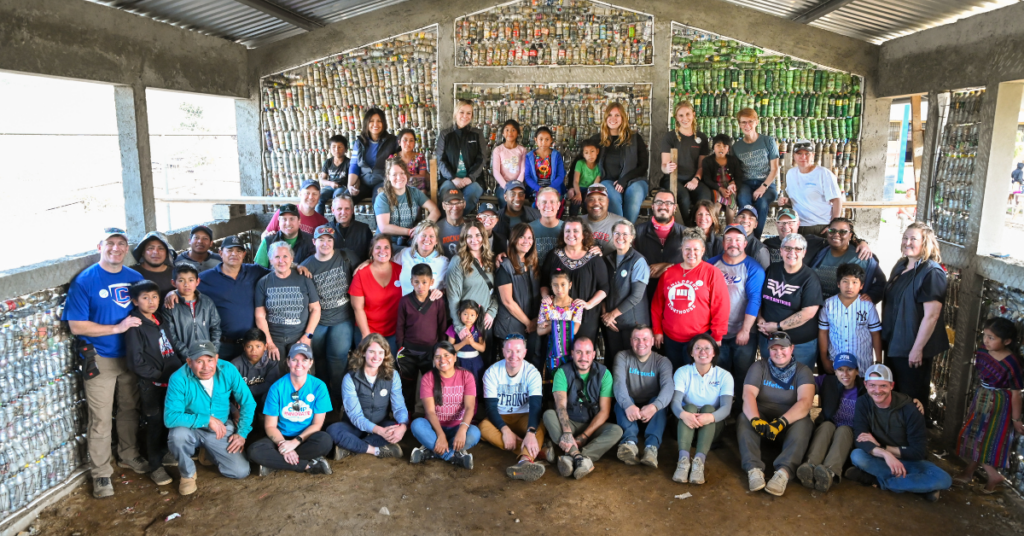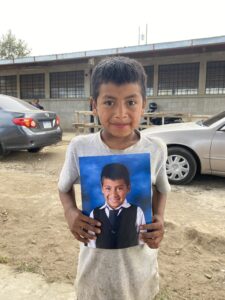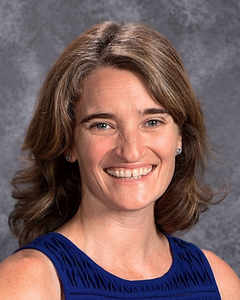Last month I was afforded the amazing privilege of attending the 2024 Lifetouch Memory Mission, alongside other educators. We spent eight days in Guatemala, with the beautiful members of the Xepatan community, building three additional classrooms to expand their existing school site. While our hope in going was to support education for children there and offer what we could to this community, each one of us ended the week feeling as though we had just received many more gifts than we could ever give.
Our group included 40 volunteers from across the United States and Canada. Twenty-six of the volunteers currently work in education as principals, superintendents, business managers, and child advocates, and represent members of AASA, NAESP, NASSP, NPTA, NCMEC, and ASBO. The other 14 volunteers are Lifetouch employees, who were chosen through a lottery system to serve on behalf of their company while also photographing the experience.

Upon arrival at the airport, we were greeted by Hug it Forward staff who were eager to welcome us to this beautiful country. Our group leaders, Andres González and Vivana Calán, grew up in Guatemala and have both worked for Hug it Forward for almost a decade. This nonprofit organization supports and empowers communities in Guatemala to build bottle schools, which are made using a concrete and rebar framework, open panels lined with chicken wire, and then an infill of “eco-bricks” which are discarded plastic bottles rammed densely with inorganic trash, such as plastic bags and food wrappers. As volunteers, we stacked and attached the eco-bricks to the chicken wire, creating a wall structure that will be covered with cement stucco and later painted to create a finished look.
On our first day at the school site where we volunteered, we were welcomed by hundreds of students and their families, many of whom were members of the Xepatan Parent Teacher Association. The welcome ceremony included singing and folk dancing by the students, speeches by multiple school personnel, and a dance party among all the volunteers and children. It was incredible how quickly we found ourselves interacting so comfortably with the students, their kindness and smiles inviting us to have fun together.

As part of Memory Missions, Lifetouch employees facilitate a picture day for the students. The children came to the opening ceremony dressed in their best outfits so that volunteers could take a school photograph of them. Lifetouch employees eagerly awaiting the digital files back in the United States printed the pictures and then hand-delivered the precious cargo in-person three days later, so that we could give picture packets to each child. The students beamed in awe as they looked at themselves in print.
Beyond Building Classrooms
We also connected with the community. On day four, volunteers visited the houses of PTA members, who generously opened their homes to us. We were shown how they make corn tortillas in their kitchen and how they use a loom affixed to a harness system to weave textiles by hand.
We also met with teachers of the Xepatan School, a primary school serving about 300 students. We shared with each other stories, challenges, and strategies in our education systems. We also listened to a Xepatan parent share his story of immigrating to the United States for three years as a teenager so that he could work and send money back before returning to Guatemala to start his own family. Additionally, we heard from a local historian who told stories about Guatemala’s civil war that lasted 36 years and ended in 1996. Having the opportunity to sit with and listen to community members who care so deeply about their children’s futures, tell their stories, and share their experiences, made the trip even more personal than we were expecting.
Throughout our three workdays, children from the school spent time at the worksite, holding hands with the volunteers, braiding their hair, playing basketball, and sharing big smiles and huge hugs. As much value as there was in providing the physical labor to build the school, the time spent playing with the children was another gift in itself to both the volunteers and the students.
Day five we toured Iximché, a smaller Mayan archaeological park and national monument, with ruins of three major plaza areas and a ceremonial site. Our exceptional tour guide facilitated a traditional Mayan fire ceremony, teaching us about the Mayan calendar, the symbolism of particular colors, and the importance of each compass direction. Again, we felt as though we were receiving an unexpected gift of cultural sharing and generosity.
NASSP President Aaron Huff attended this year’s trip, along with NASSP 2024 National Principal of the Year Finalist Kim Winterbottom. “The one thing I walk away from here with is the value of community, the power of education,” Huff said. “I think in some places, we’ve lost the power of community and the power of education, and it’s time we restore it. That’s what will drive me, moving forward.”
I couldn’t agree more.

